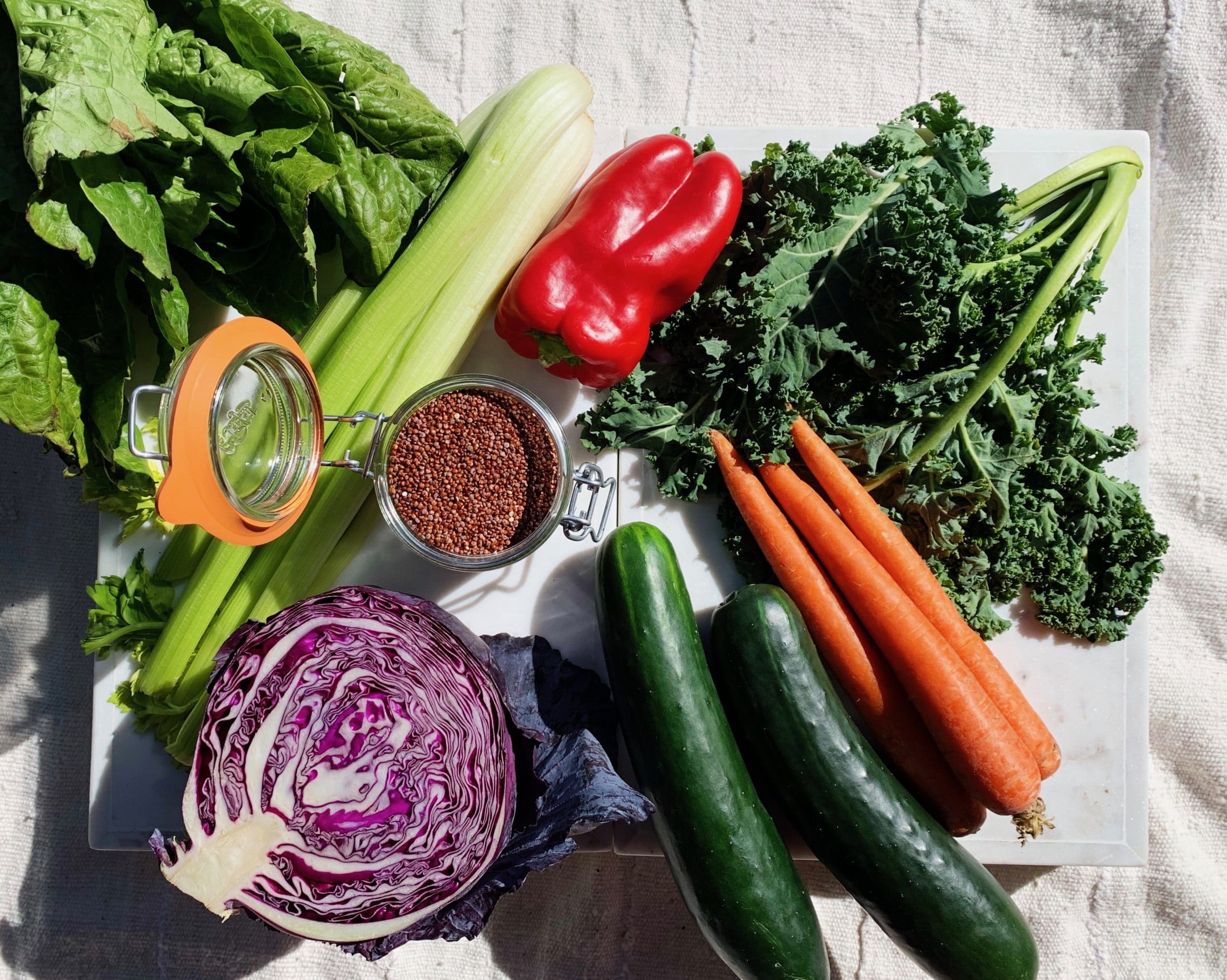You might have heard the word inflammation before in the context of health and wellness. Emerging research is pointing to exactly how chronic inflammation impacts our health and how we can combat it through a healthier diet. But what exactly is chronic inflammation and how do you even know if you have it?
As a functional medicine practitioner, Dr. Will Cole sees some level of chronic inflammation in almost every single one of his patients. So we asked him to come onto the blog and share a bit more about it. Since inflammation can exist on a spectrum, from mild to severe, it can look different for each person but there are ways to tell if it is impacting you. In fact, your body is pretty good at letting you know when there is an issue.
What is inflammation?
Inflammation is actually a normal and healthy process. For example, when you get a cut or scrape or come down with a virus, inflammation is there to help repair the damaged tissue and to fight off the foreign invaders. Inflammation becomes a problem however when it doesn’t subside once the threat disappears.
When inflammation runs wild, it creates a cascade of pro-inflammatory cells and molecules, including tumor necrosis factor (TNF), nuclear factor-kappa B (NF-kB), interleukins (ILs), prostaglandins, and free radicals. When these build up over time, they can lead to some series health issues such as autoimmune disease.
What does inflammation feel like?
Acute inflammation, the healthy kind, is characterized by pain, redness, and swelling in the affected area. Chronic inflammation is a little more elusive and why many people go on for years without fully knowing their symptoms are related to inflammation.
I’ve found that inflammation can manifest itself in 8 different areas of the body with corresponding symptoms that range from mild to severe. I talk more about this in my book, The Inflammation Spectrum, but even low-levels of inflammation can correspond to more common symptoms that you may experience on a daily basis.
1. Brain and nervous system
Inflammation in the brain can contribute to brain fog, anxiety, depression, poor memory, and an inability to concentrate.
2. Digestive tract
Constipation, stomach pain, diarrhea, bloating, and heartburn are common symptoms of inflammation in this area as well as more chronic conditions like leaky gut, Crohn’s disease, and IBS.
3. Liver, kidneys, and lymphatic system
Together, these make up your detoxification system and are responsible for detoxing your body from any toxins you are exposed to through diet or other environmental exposures. Typical symptoms of inflammation in this system includes edema, bloating, rashes, acne, or other skin problems.
4. Liver, pancreas, and cellular insulin receptor sites
These areas make up your blood sugar/insulin system. When inflammation is high in this area it can lead to weight gain and weight loss resistance, unstable blood sugar, pre-diabetes, and Type II diabetes.
5. Endocrine system
This system includes your brain’s communication with your glands that produce your hormones. Since any of your hormones can be affected, including your thyroid, adrenal glands, and sex glands, symptoms of inflammation in this area can include thinning hair, low sex drive, anxiety, fatigue, irregular menstruation, or autoimmune thyroid disease like Hashimoto’s.
6. Muscles, joints, and connective tissue
When your musculoskeletal system is inflamed, you may experience muscle and joint pain, stiffness, and fibromyalgia.
7. Immune system
This is the governing system over inflammation. When inflammation is out of control, your immune system will go into overdrive and attack your own tissues, organs, and structures of your body in protection mode. This is known as autoimmunity and can affect all different areas of your body.
8. Poly-inflammation
This is when you have inflammation in more than one area of your body at once. I’ve found that if you have inflammation in one area you are much more likely to have it in many others.
How to diagnose inflammation
If you experience any one of these symptoms and suspect inflammation is a problem for you, you can run labs to more definitively determine your individual inflammation levels.
C-reactive protein: This test looks for levels of the inflammatory C-reactive protein in your blood.
Homocysteine: This inflammatory amino acid has been linked to autoimmune diseases.
Ferritin: High levels of ferritin is considered an indicator of inflammation.
How to calm inflammation
Just like what triggers inflammation in you, what calms inflammation in you is going to be bio-individual. However, there are many ways you can start lowering inflammation today.
1. Try an elimination diet
Following an elimination diet as laid out in my book is a great way to discover your individual food triggers and reset your system. By taking out foods that are most likely to cause inflammation such as grains, dairy, and refined sugar, you’ll be able to see exactly what foods trigger an inflammatory response once you add them back into your diet.
2. Meditate
Meditating for even just 5 minutes a day can make a difference in inflammation levels. Research shows that meditation can help decrease pro-inflammatory cytokines like IL-6.
3. Get moving
Any type of exercise that gets your heart rate up like walking or riding your bike can suppress inflammatory markers. If you really want to elevate your inflammation-fighting efforts, try a cardio exercise like HIIT training which has extra anti-inflammatory properties.
4. Slow down on the alcohol
Reducing your alcohol intake was shown to lower C-reactive protein levels. If you do want to treat yourself though, organic red wine has been linked to lower CRP when consumed in small amounts.
5. Add in a probiotic
Look for a probiotic that contains a blend of Lactobacillus and Bifidobacterium, which has been shown to decrease CRP after just eight weeks.
Try our Whole30 meals today to kickstart your inflammation-busting journey.





Leave a Reply
No Comments